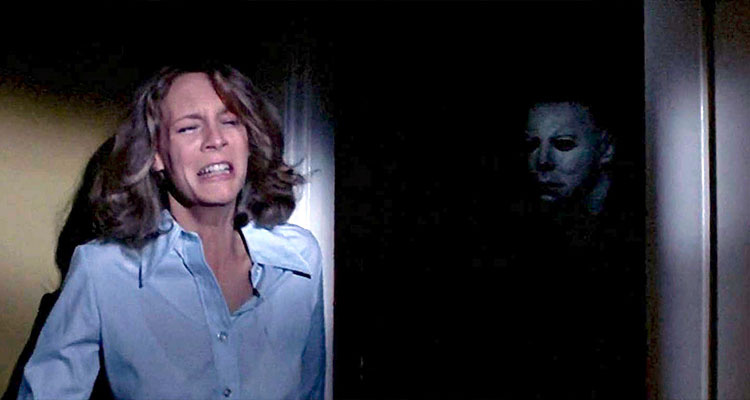The slasher horror genre has a fascinating and enduring history that has left an indelible mark on the horror film industry. Emerging in the late 1970s and early 1980s, this sub-genre has become one of the most iconic and recognizable forms of horror, characterized by its violent and often masked antagonists who stalk and systematically kill their victims.
The influence of the slasher genre can be traced back to some of its earliest films, such as PEEPING TOM (1960). Directed by Michael Powell, this British psychological thriller tells the unsettling story of Mark Lewis, a man who becomes obsessed with filming his victims' deaths through a camera mounted on a tripod. While the film was met with controversy and criticism upon its release, it has since gained recognition as a classic and is acknowledged for its impact on the development of the slasher genre.
Another seminal film in the slasher genre is Alfred Hitchcock's PSYCHO, also released in 1960. This influential masterpiece tells the story of Marion Crane, who steals money from her employer and ends up at the Bates Motel, where she encounters the disturbed Norman Bates.
With its iconic shower scene and unexpected plot twist, PSYCHO became a critical and commercial success and continues to be regarded as one of the greatest horror films ever. The film's exploration of psychological horror and its emphasis on a deranged killer provided a template for future slasher films.
THE TEXAS CHAIN SAW MASSACRE, released in 1974, holds a special place in the slasher genre's history. Directed by Tobe Hooper, this low-budget horror film is notorious for its relentless intensity and shocking brutality. Inspired by the real-life crimes of Ed Gein, MASSACRE follows a group of friends who encounter a family of cannibalistic killers led by the iconic Leatherface.
THE TEXAS CHAIN SAW MASSACRE is widely regarded as a game-changer in the genre, pushing the boundaries of on-screen violence and establishing a new standard for visceral terror. Despite its controversial nature, the film received critical acclaim for its effective use of suspense, atmospheric cinematography, and unconventional storytelling techniques. It became a cult classic and influenced a generation of horror filmmakers, leaving an indelible mark on the slasher genre.
The slasher genre took a supernatural turn with the release of Bob Clark’s BLACK CHRISTMAS, also released in 1974. This Canadian horror film centers around a group of sorority sisters who an unidentified and unseen assailant terrorizes during Christmas. BLACK CHRISTMAS is often considered one of the earliest examples of the slasher subgenre, and its innovative use of point-of-view shots and suspenseful storytelling techniques laid the groundwork for subsequent films in the genre.
The true breakthrough for the slasher genre came with John Carpenter's HALLOWEEN in 1978. This landmark film follows the relentless pursuit of a masked killer named Michael Myers, who escapes from a mental institution and returns to his hometown to stalk and murder a group of teenagers.
HALLOWEEN revolutionized the horror genre and became a pop culture phenomenon, grossing over $70 million worldwide on a budget of just $325,000. The film's atmospheric tension, chilling score, and the enigmatic figure of Michael Myers propelled it to cult status, spawning numerous sequels, remakes, and a legacy that continues today.
Building on the success of HALLOWEEN, Sean S. Cunningham's FRIDAY THE 13TH was released in 1980. This slasher film centered around the infamous Camp Crystal Lake, where a group of camp counselors fell victim to an unseen murderer.
Although initially met with mixed reviews, FRIDAY THE 13TH struck a chord with audiences, becoming a box office hit. The film's success led to an extensive franchise, featuring numerous sequels that further solidified the slasher genre's popularity and introduced the iconic masked killer, Jason Voorhees, as a horror icon.
In 1984, Wes Craven's A NIGHTMARE ON ELM STREET introduced a new twist to the slasher genre, blending supernatural horror and dream manipulation elements. The film follows a group of teenagers plagued by the vengeful spirit of Freddy Krueger, a child killer who haunts their dreams and torments them in their sleep.
A NIGHTMARE ON ELM STREET was a critical and commercial sensation, combining inventive visuals, a unique premise, and an unforgettable antagonist portrayed by Robert Englund. The film spawned a long-running franchise, becoming one of the slasher genre's most successful and enduring series.
The influence of these films and the slasher genre cannot be understated. They paved the way for countless imitators and inspired filmmakers to explore the dark realms of horror storytelling. The slasher genre's enduring appeal lies in its ability to tap into primal fears and provide audiences with an adrenaline-fueled experience, with the masked killers serving as symbolic embodiments of our deepest anxieties.
Over the years, the slasher genre has evolved and diversified, incorporating various sub-genres, themes, and narrative techniques. It has witnessed the rise of iconic franchises such as CHILD’S PLAY, CANDYMAN, SCREAM, and SAW, among many others. The genre has also gone through cycles of reinvention, adapting to changing cultural contexts and embracing new storytelling approaches.
In conclusion, the slasher horror genre holds an important place in the history of cinema, captivating audiences with its blend of suspense, gore, and psychological terror. From the groundbreaking works of PEEPING TOM and PSYCHO to the franchise juggernauts of HALLOWEEN, FRIDAY THE 13TH, and A NIGHTMARE ON ELM STREET, the slasher genre continues to leave an indelible mark on the film industry. It is a testament to these films' enduring power and ability to tap into our deepest fears and primal desires.











